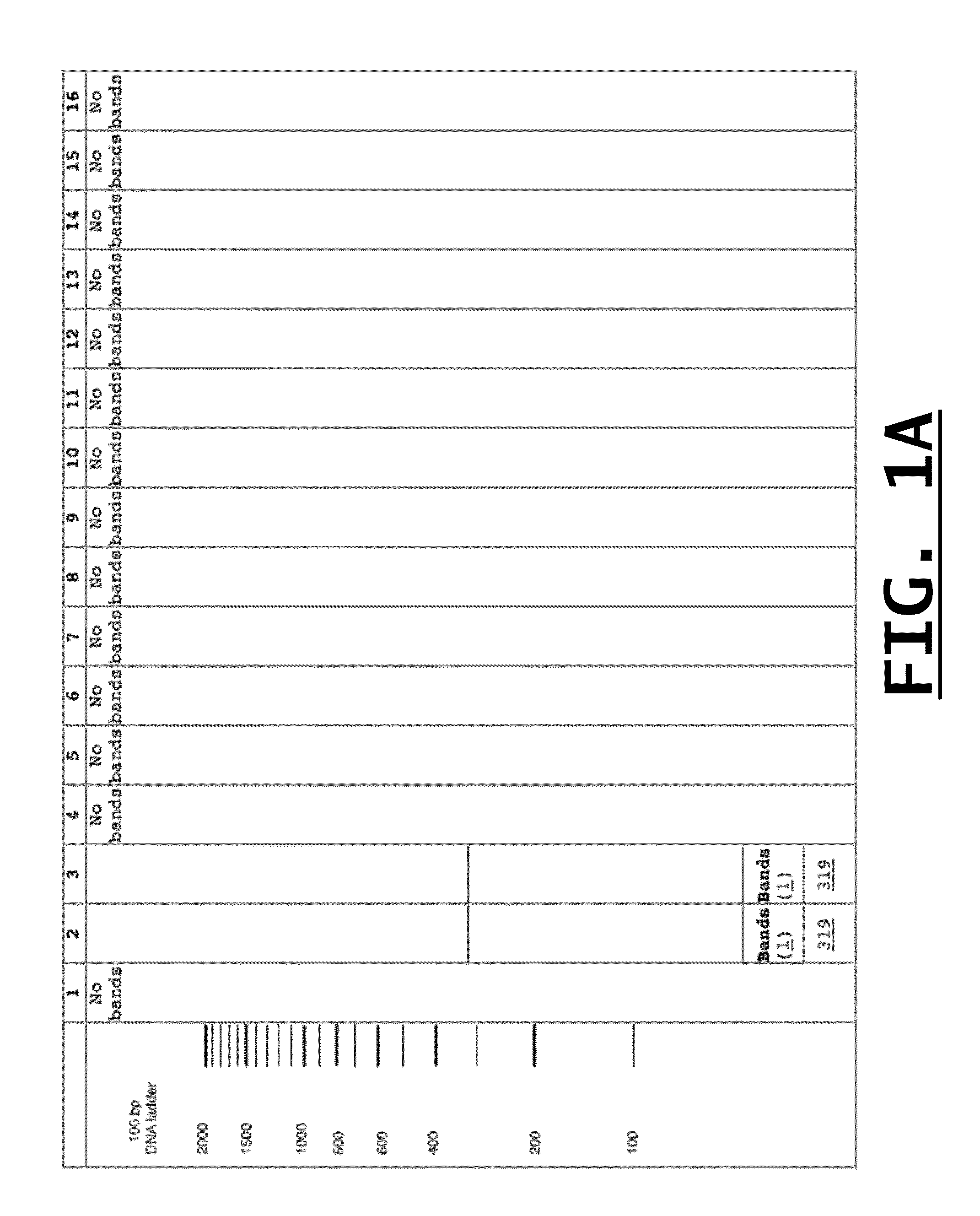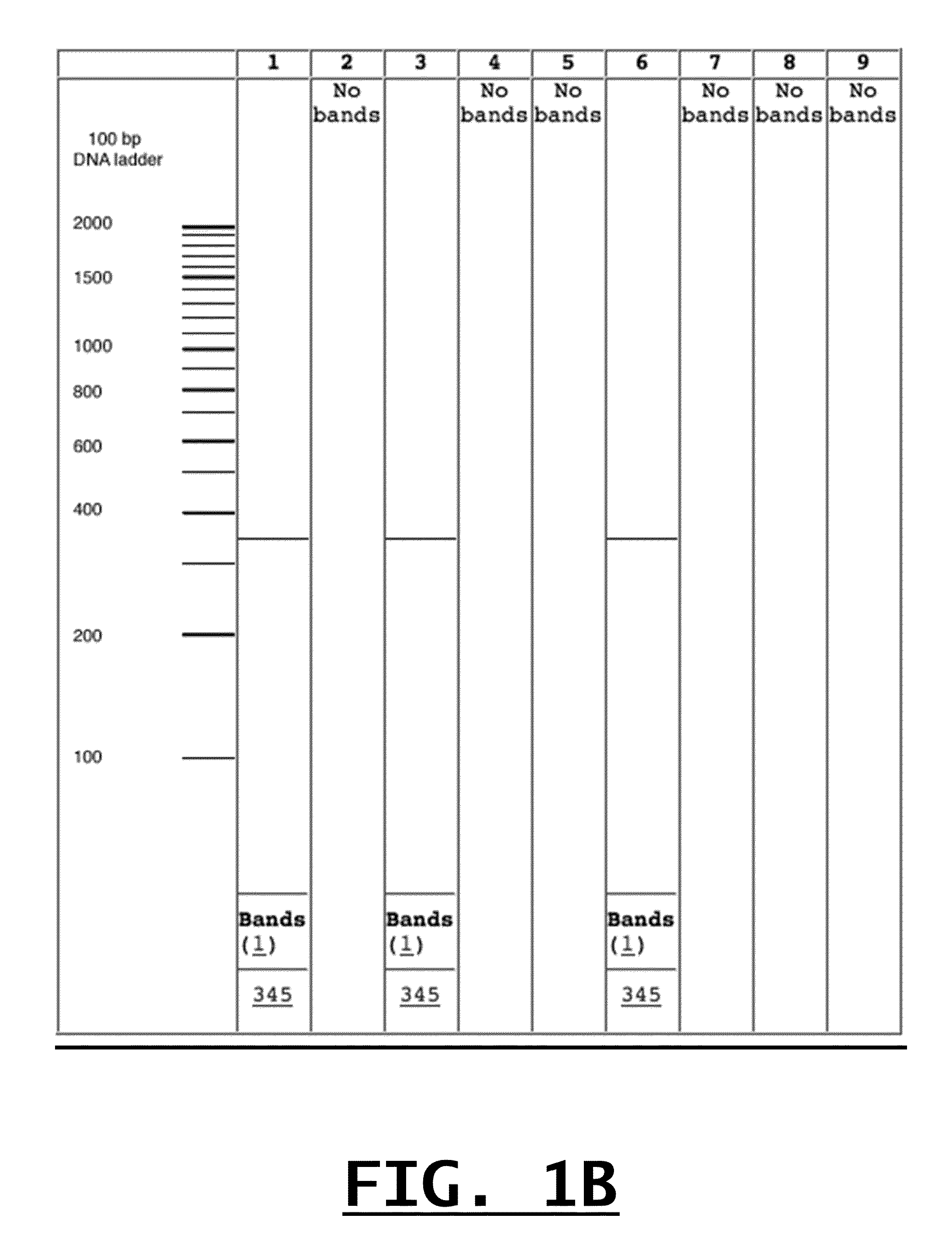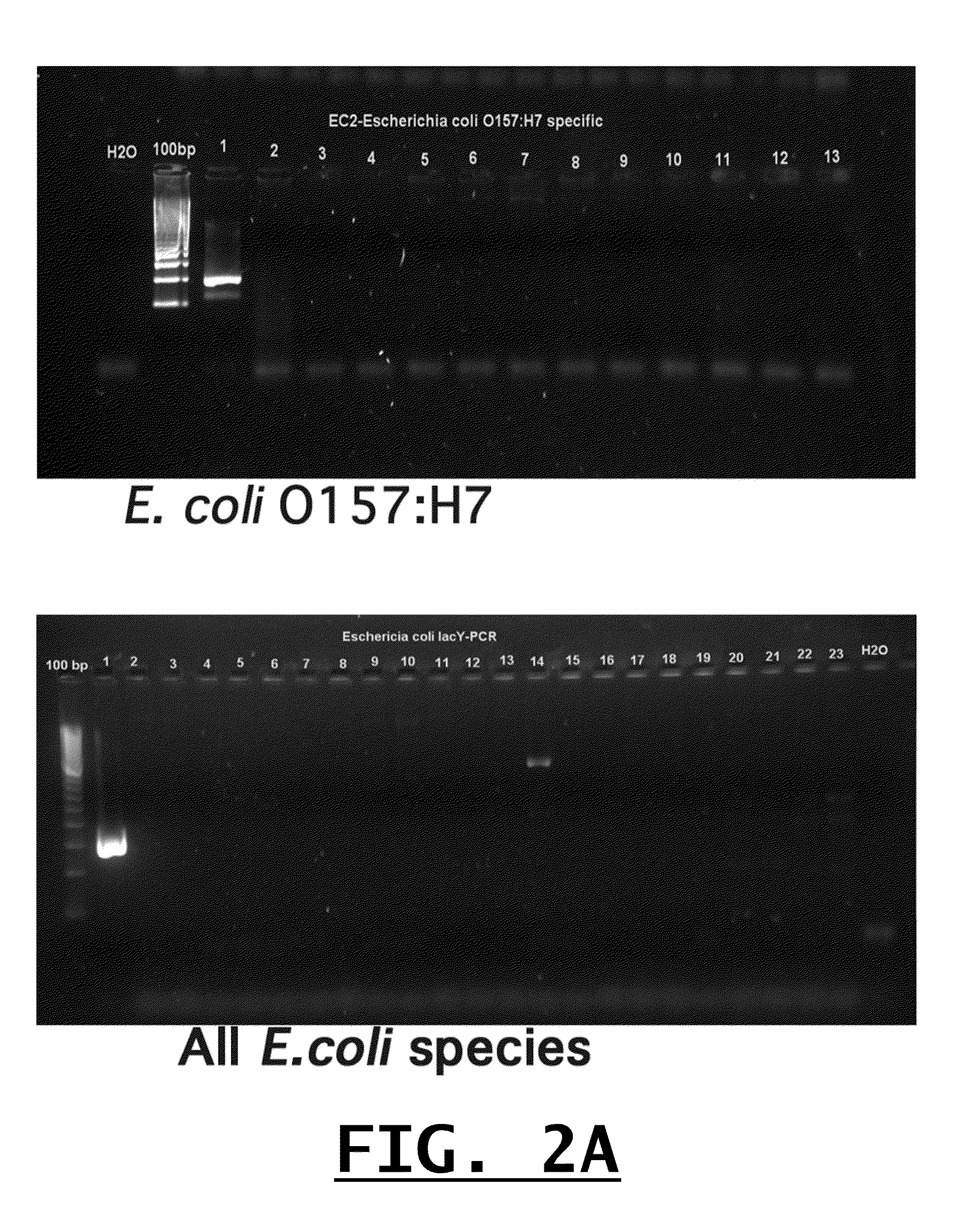Detection of food threat agents and food-borne pathogens
a food threat agent and food-borne pathogen technology, applied in the field of molecular detection of food threats, can solve the problems of significant potential threat to national security, children, elderly, and persons with certain existing diseases, and is more susceptible to dehydration and other complications, and achieves rapid identification.
- Summary
- Abstract
- Description
- Claims
- Application Information
AI Technical Summary
Benefits of technology
Problems solved by technology
Method used
Image
Examples
example 1
[0060]The following experiment was performed to confirm the specificity of Applicants' designed primer pairs to detect by conventional PCR and gel electrophoresis only their intended food-borne pathogens and threat agents. For each of the primer pairs identified in Table 2, single target PCR was performed against the intended target and against one or more other closely related organisms. Additionally, this single target PCR experiment was repeated for the same group of organisms using a primer known to detect all of the organisms (e.g., a “genus-inclusive primer”), such as primers All-Vibrio or All-F in Table 2, or other genus-inclusive primers already known to those of ordinary skill in the art. In this manner, each of Applicants' designed primers was tested against its respective template DNA and DNA from the maximum number of closely related species.
[0061]PCR was conducted using a 25 μl final volume containing 0.2 μM of forward and reverse primers, 12.5 μl of Pwo Master mix cont...
example 2
[0065]Conventional PCR is time consuming and labor intensive, and therefore not practical for use in the detection of pathogens in a high throughput platform. After conventional PCR methods were employed as described above to visualize the PCR products and determine the ability of each primer in Table 2 to identify their respective targets with specificity, Applicants performed the following experiments to determine the suitability of the primers for the detection of foodborne bacterial pathogens by real-time PCR. Again, these experiments were performed against DNA from the various 23 foodborne pathogens and related bacterial species listed in Table 1 as appropriate for the primers being tested.
[0066]PCR conditions were setup so that a species-specific primer was used to detect DNA from target and other bacteria arrayed on 96-well plates. On the array, one well was designated for DNA from one bacterial species or strain. While DNA was added to the designated wells, a primer solution...
example 3
[0075]The following experiment was conducted to test the sensitivity of each of the primers identified in Table 2. Sensitivity in a real-time PCR assay was determined by five-fold serial dilution of several target DNA samples in nuclease-free double distilled H2O from each of the bacterial species. Initial DNA concentrations were 2.5 ng / μl for E. coli O157:H7 strain EDL933, 2 ng / μl for Francisella tularensis ssp. tularensis, 2.6 ng / μl for Shigella dysenteriae, 3.7 ng / μl for S. Typhi, 3 ng / μl Vibrio cholerae and 3.8 ng / μl for Yersinia pestis. One microliter of each of the DNA dilutions were used in a 20 μl total reaction volume and real-time PCR was run for 27 amplification cycles (under similar conditions to the example described above). At the end of the run, 4 μl aliquots from each of the wells were resolved on a 2% agarose gel and visualized by GelRed staining (Biotium®, Hayward, Calif.).
[0076]FIG. 4A through FIG. 4F are amplification plots for real-time PCR performed on the vari...
PUM
| Property | Measurement | Unit |
|---|---|---|
| volume | aaaaa | aaaaa |
| volume | aaaaa | aaaaa |
| volume | aaaaa | aaaaa |
Abstract
Description
Claims
Application Information
 Login to View More
Login to View More - R&D
- Intellectual Property
- Life Sciences
- Materials
- Tech Scout
- Unparalleled Data Quality
- Higher Quality Content
- 60% Fewer Hallucinations
Browse by: Latest US Patents, China's latest patents, Technical Efficacy Thesaurus, Application Domain, Technology Topic, Popular Technical Reports.
© 2025 PatSnap. All rights reserved.Legal|Privacy policy|Modern Slavery Act Transparency Statement|Sitemap|About US| Contact US: help@patsnap.com



